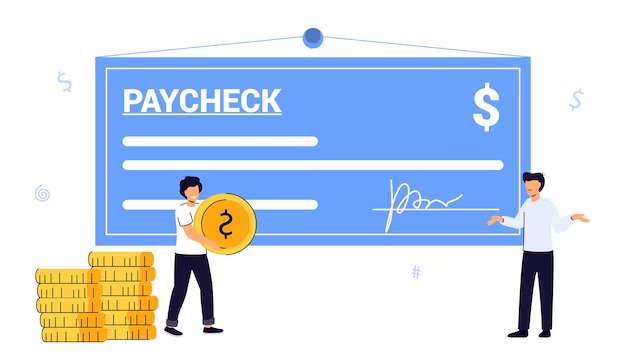
Managing money can feel overwhelming, especially when you’re caught in the paycheck-to-paycheck cycle. For many people, each month starts with good intentions, but bills, expenses, and unexpected costs quickly drain their income. The good news? With the right personal finance tips and a clear plan, you can take control of your money, build security, and stop worrying about going broke.
In this article, we’ll cover a five-step plan to help you manage your finances wisely, save for emergencies, and even grow your wealth over time.
Why Do People Live Paycheck to Paycheck?
The first step to solving any financial problem is understanding it. Most people exchange their time and skills at a job in return for a paycheck. That paycheck immediately goes toward essentials—rent, bills, groceries—leaving only a small amount for extras like dining out or shopping.
This cycle often repeats endlessly, leaving little or no savings. The problem isn’t laziness or bad luck—it’s the lack of a sustainable financial plan. Without change, losing a job or facing an emergency can bring everything crashing down.
Step 1: Adopt a Frugal Mindset
One of the most powerful personal finance tips is adopting frugality—not in the sense of deprivation, but in cutting waste and making intentional spending decisions.
Examples of frugal choices include:
Downsizing to a smaller, more affordable home
Driving a reliable but inexpensive car
Reducing utility bills
Cutting back on unnecessary shopping or takeout
By lowering your monthly expenses, you’ll free up money to save and invest, breaking the dependency on every paycheck.
Step 2: Build an Emergency Fund
Even with frugal habits, life can throw surprises. That’s why you need an emergency fund—a safety net to cover 6–12 months of living expenses.
The strategy is simple: pay yourself first. Each time you receive a paycheck, set aside a portion into a separate savings account. Over time, this fund will protect you if your car breaks down, medical bills arise, or you lose your job. Instead of relying on credit cards or loans, you’ll have cash ready.
Step 3: Make Your Money Work for You
Once your emergency fund is built, the next step is to grow your wealth. Instead of letting inflation eat away at your savings, put your money to work through smart investments.
A beginner-friendly option is index funds—low-cost, diversified investments that steadily grow over time. This is one of the most reliable ways to build passive income and fight inflation.
The idea is simple:
Invest consistently from every paycheck
Let your investments grow over time
Reinvest the returns instead of spending them immediately
This step won’t make you rich overnight, but it will create a stable path to financial growth.
Step 4: Explore Additional Income Streams
When you’re no longer fully dependent on a paycheck, opportunities open up. Consider creating side hustles or businesses that generate extra income:
Driving for ride-sharing apps
Freelancing your skills
Starting a small online business
Content creation (like YouTube, blogging, or digital products)
Having multiple income streams reduces your risk and gives you more control over your financial future.
Step 5: Stay Consistent and Keep Expanding
The journey doesn’t stop once you save and invest. Long-term success comes from consistency. Keep refining your budget, finding new ways to grow your money, and adjusting your plan as life changes.
Financial independence isn’t about getting rich quickly—it’s about building stability, confidence, and freedom over time.
Conclusion: Take Control of Your Financial Future
Breaking out of the paycheck-to-paycheck cycle isn’t impossible. By adopting frugal habits, building an emergency fund, investing wisely, and exploring new income streams, you can transform your relationship with money.
These personal finance tips aren’t flashy or complicated—they’re simple, practical steps that anyone can apply. If you start today, your future self will thank you.